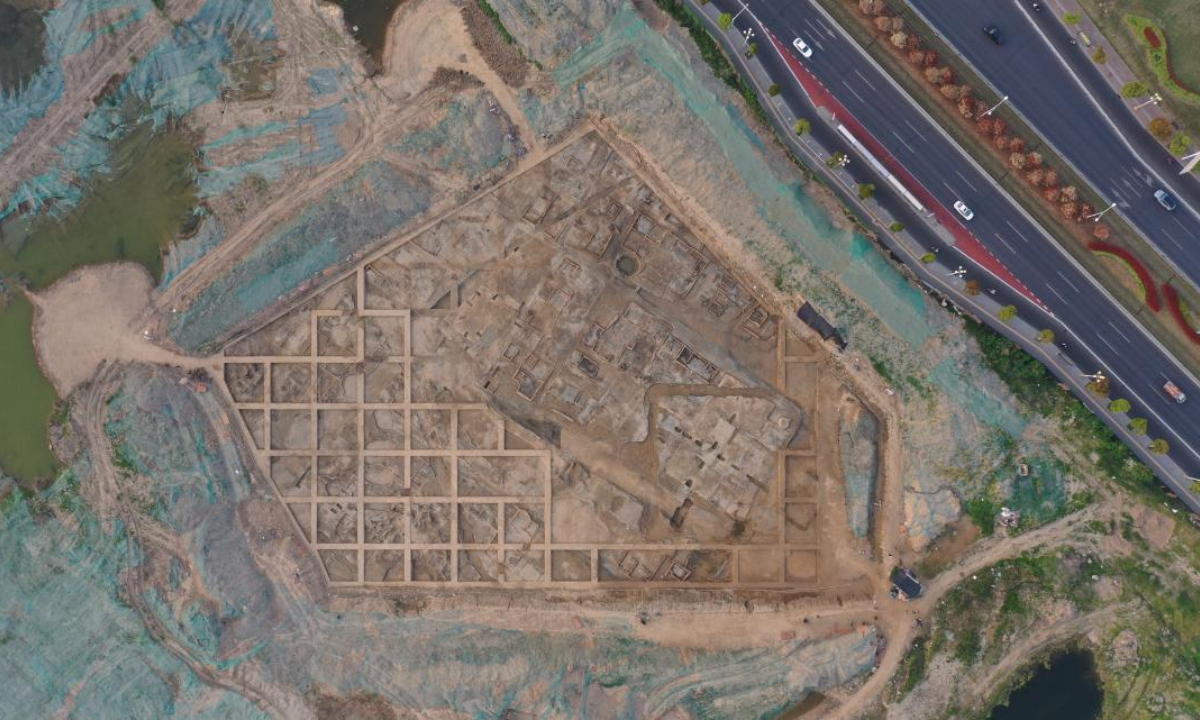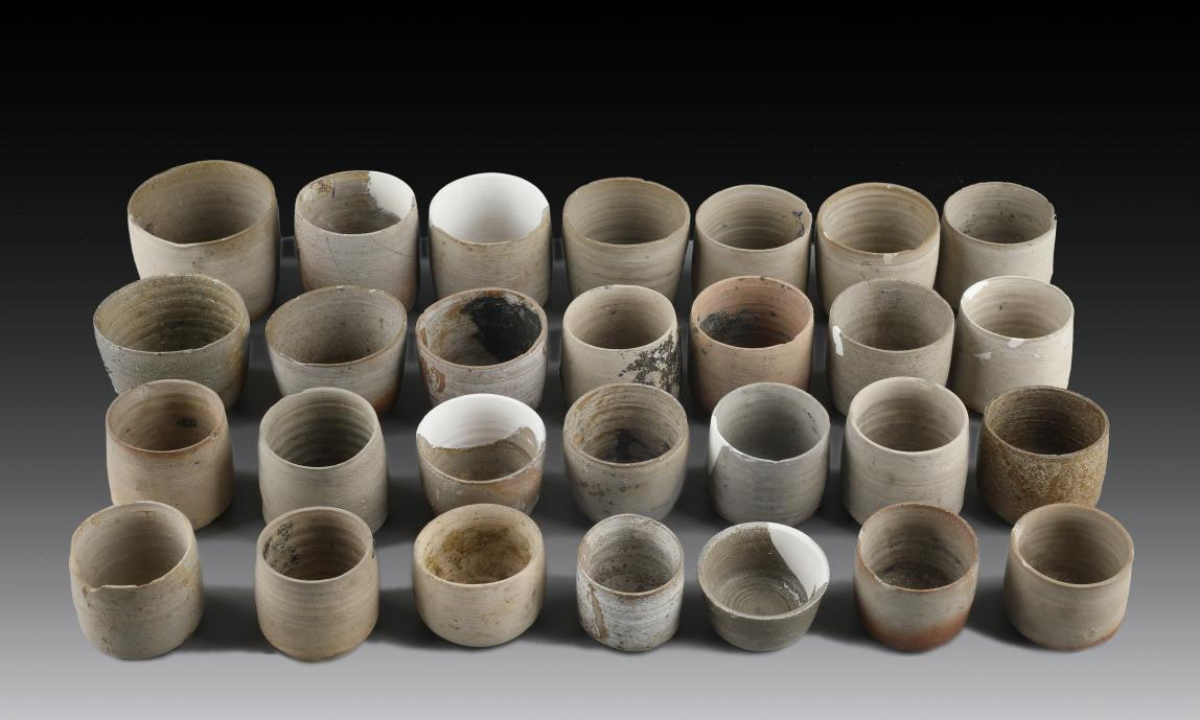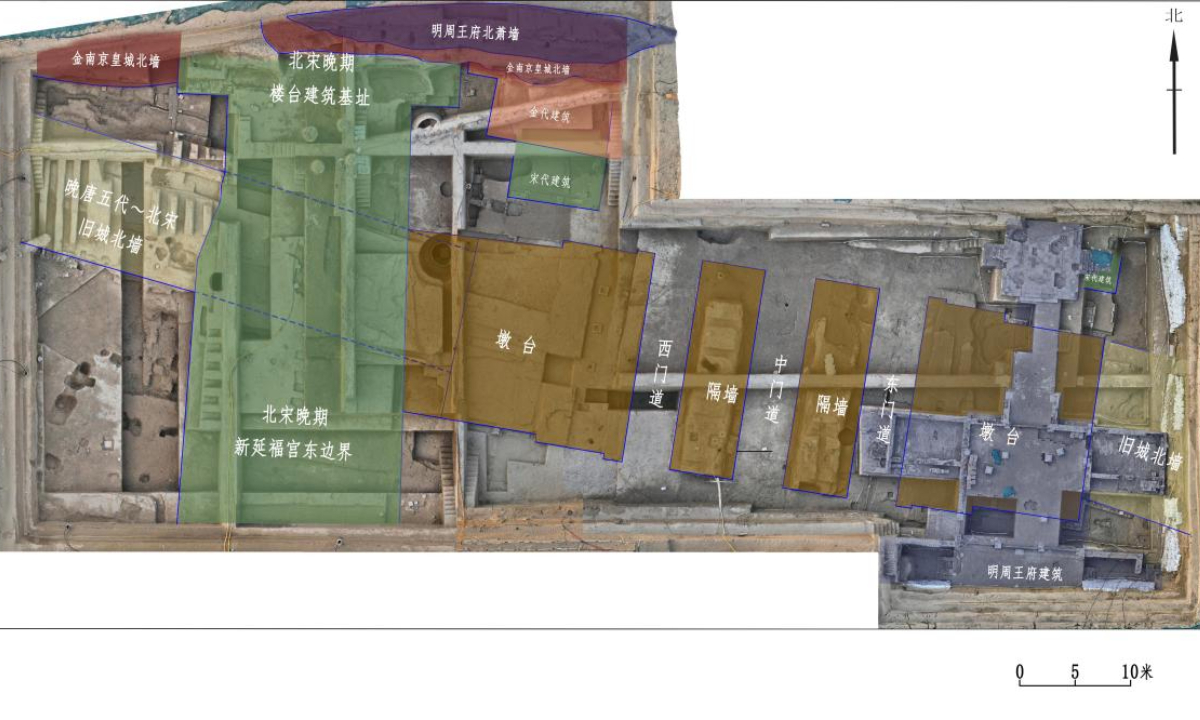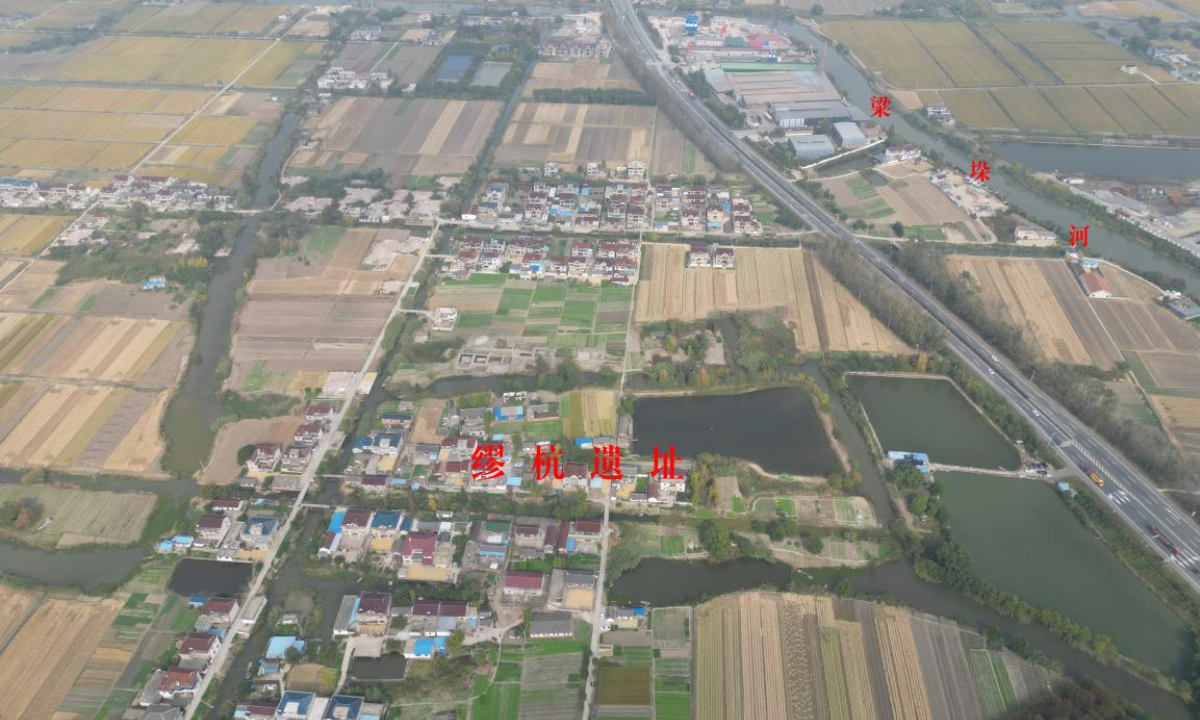
The Banzha Town site in Huai’an, East China’s Jiangsu Province. Photo: Courtesy of National Cultural Heritage Administration
On the 10th anniversary of the successful application of the Grand Canal for World Heritage status, archaeologists at a Friday conference held by China's National Cultural Heritage Administration revealed the latest archaeological achievements of the world heritage site.
Zhao Libo, a deputy research fellow at the Huai'an Cultural Relics Protection and Archaeological Research Institute in East China's Jiangsu Province, stated that three new archaeological discoveries in Huai'an reflect the history of the development of towns along the Grand Canal, the evolution of human-land relations, and changes in river management during the Ming and Qing dynasties (1368-1911).
Among them, the Qingcheng Gate site is the west gate of the old city of Huai'an, fully revealing the overall pattern of the main city gate, the moat, and the drainage system. The Xinlu site is a well-preserved and clearly laid-out Ming Dynasty street site, and the Banzha Town site is a town site from the Ming and Qing dynasties, providing important physical materials for the study of the Grand Canal's grain transport, salt transport, and customs and tax issues.

The unearthed ceramic cups from the Warring States Period (475BC–221BC) at the Jizhong Site in Shaoxing, East China’s Zhejiang Province. Photo: Courtesy of National Cultural Heritage Administration
Many have heard the legendary tale of King Goujian of Yue State, who endured hardships to avenge his state during the Warring States Period (475BC-221BC). Yet, the unveiling of the 2,500-year-old site of the ancient capital of Yue still leaves people in awe. Chinese archaeologists revealed more details about the Jizhong Site in Shaoxing city, East China's Zhejiang Province, a high-level architectural site from the Warring States Period and the Han Dynasty (206BC-AD220).
Li Longbiao, a research fellow from the Shaoxing Cultural Relics Archaeological Research Institute, said at the conference that the relics include a set of large-scale architectural foundations and a well. The well, with a diameter of 0.82 meters, is dated to about 2,500 years ago by carbon-14 dating. According to historical records, it is speculated to be a remnant of the Yue State. Meanwhile, Han Dynasty wooden slips with ink inscriptions were also found for the first time.
Li said that the Jizhong site is the first to confirm the existence of Yue State architecture within the ancient city of Shaoxing, providing important clues for exploring the capital of the Yue State. The discovery of high-level official buildings from the Han Dynasty, with the emergence of ink inscriptions, is an important discovery in the archaeology of prefectures and counties during the Han Dynasty.

The site layout of a city gate area in Kaifeng, Central China’s Henan Province, during Northern Song Dynasty. Photo: Courtesy of National Cultural Heritage Administration
The Qingming Shanghe Garden, built based on Northern Song Dynasty painter Zhang Zeduan's
Riverside Scene at Qingming Festival, recreates the bustling scenes of the Northern Song period. Experts from the archaeological project have detailed the Jinglong Gate site in Kaifeng, Central China's Henan Province, one of the city gate sites in the capital city of the Northern Song Dynasty - Dongjing.
Wang Sanying, a research fellow at the Kaifeng Cultural Relics Archaeological Research Institute, stated at the conference that the Jinglong Gate site in Kaifeng is a city gate site of the inner city's northern wall in Dongjing. The overall structure of the city gate is a three-way gate, composed of gate passages, partition walls, and piers on both sides.
"It is currently the largest and most prestigious capital city gate site discovered in the Northern Song period, providing important evidence for understanding the structural layout and architectural system of the capital city of the Northern Song Dynasty," Wang told the Global Times on Friday.
At the conference, experts also revealed a series of new discoveries and research findings in the salt industry archaeology in Yancheng, East China's Jiangsu Province.

Miaohang site in Yancheng, East China’s Jiangsu Province. Photo: Courtesy of National Cultural Heritage Administration
Chen Gang, a research fellow at the Jiangsu Provincial Institute of Cultural Relics and Archaeology, said that a series of salt industry archaeological discoveries in Yancheng have been clarifying the historical development trajectory of the salt industry in the area.
Among them, the Shajingtou site is presumed to be the site of the Western Han Dynasty's Yandu County, while the Miaohang and Houbeituan sites have been empirically identified as salt-producing settlements from the Tang Dynasty (618-907) to the Ming and Qing dynasties, which is of great value for studying the management of the coastal salt industry by the central government since the Western Han Dynasty, as well as the technical inheritance and development of salt-making techniques during different periods.







